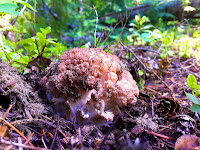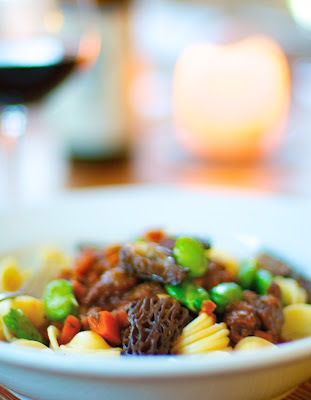IN 1998 I SPENT six months working in the UK, living in a flat in the dingy London suburb Slough (rhymes with cow) made famous by The Office (and, before that, by the poet laureate John Betjeman).
I watched—along with everyone else—BBC episodes of Delia Cooks, Ready Steady Cook, Two Fat Ladies, Nigel Slater, and ate extraordinary Indian food. On Sundays I would ride my bike through the countryside, pulling over for a pint every so often and eventually stopping to sup on afternoon roast before wobbling back home.
One of my favorite quick meals was a hot vegetarian sandwich that Nigel Slater calls a Bap. He roasts the caps of large field mushrooms with garlic butter and parsley. This simple sandwich is excellent. Besides the usual portobello, try it with a haul of wild porcini mushrooms.
To make the sandwich, pre-heat oven to 400 degrees. Chop together some garlic and parsley and mix into a large dollop of softened butter with a generous sprinkling of salt. Slather each inverted mushroom cap with the garlic butter and roast for about 20 minutes. When the mushrooms are cooked and starting to brown a little at the edges, you can melt some cheese such as provolone or mozzarella as a finishing touch.
Make sure to use good bread. When it’s time to assemble the sandwich, rub the cut ends of the bread in the pan juices. Nigel says a good Bap should drip down your hands and arms when you eat it. I concur.












